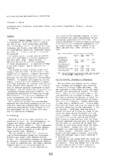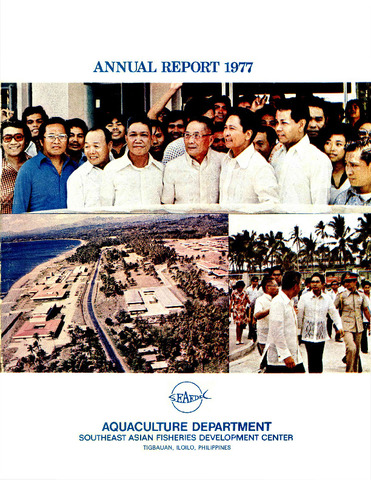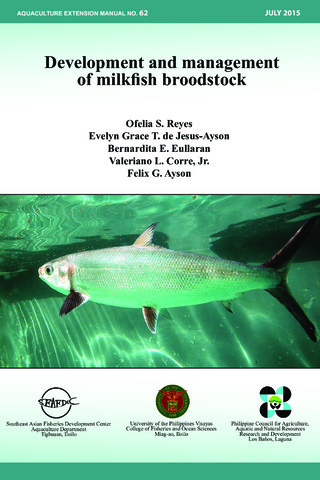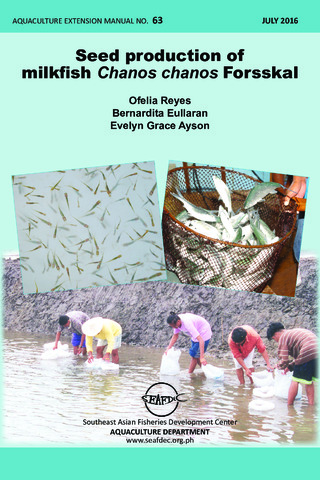Milkfish culture and artificial propagation
Share
Abstract
Milkfish (Chanos chanos Forsskal) is widely distributed in the Indo-Pacific region and one of the most extensively cultured fish in Southeast Asia. In the Philippines, Indonesia and Taiwan, over 400,000 hectares of brackishwater ponds and freshwater bodies are used to culture milkfish for food and as baitfish.
In recent years, various culture methods have been developed to increase production per unit pond area. These include: 1) improved methods of pond fertilization, 2) stock manipulation, 3) adoption of deepwater pond systems and 4) supplemental feeding.
Fry needed to stock milkfish ponds come largely from the wild. Fluctuation in fry supply due to seasonal, climatic and biological factors however has been partly responsible for the slow growth of the milkfish industry. To augment and stabilize the fry supply, efforts to breed milkfish in captivity were initiated in several institutions. These efforts have resulted in: (1) development of induced spawning techniques by hypophysation and administration of gonadotropin-releasing hormone analogues (GnRH-A); (2) spontaneous maturation and spawning of captive milkfish; (3) hormonal induction of gonad development; and (4) development of larval rearing techniques.
While milkfish culture has considerably improved and artificial propagation has been achieved, numerous problems still have to be addressed particularly those related to (1) the development of new culture techniques and (2) controlled breeding.
Taxonomic term
Collections
Related items
Showing items related by title, author, creator and subject.
-
Annual report 1977
Southeast Asian Fisheries Development Center, Aquaculture Department (Aquaculture Department, Southeast Asian Fisheries Development Center, 1978) -
Development and management of milkfish broodstock
Reyes, Ofelia S.; de Jesus-Ayson, Evelyn Grace T.; Eullaran, Bernadita E.; Corre Jr., Valeriano L.; Ayson, Felix G. (Aquaculture Department, Southeast Asian Fisheries Development Center, 2015)The manual provides developed and refined techniques for collection and transport of spawned eggs and larvae, as well as larval rearing. It also describes the necessary facilities for maintaining milkfish broodstock. Guidelines ... -
Seed production of milkfish Chanos chanos Forsskal
Reyes, Ofelia; Eullaran, Bernadita; Ayson, Evelyn Grace (Aquaculture Department, Southeast Asian Fisheries Development Center, 2016)A 26-page manual describing the site selection, hatchery design, spawning, larval rearing, natural food production, and economic analysis for milkfish.






